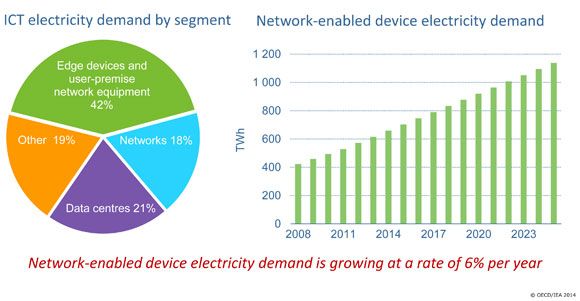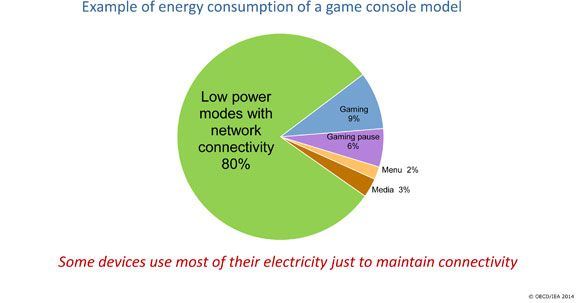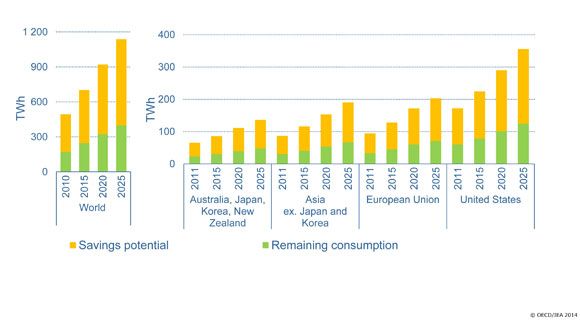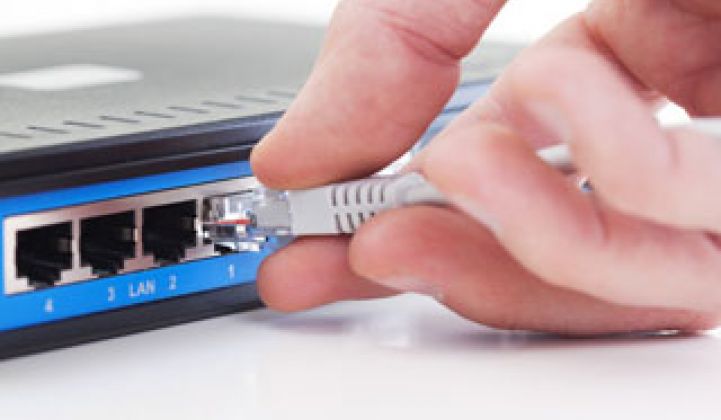Last year, there was a missed opportunity to save the amount of energy produced by 133 mid-size coal-fired power plants. And it did not involve adjusting thermostats or turning off lights.
Instead, the 400 terawatt-hours of wasted energy globally were sucked up by network-enabled devices such as set-top boxes, TVs, computers and game consoles. As more devices are connected to the internet, there is an immediate and critical need to ensure that they draw as little power as possible, according to a new report from the International Energy Agency.

By 2030, there will be 100 billion network-enabled devices, up from about 14 billion today. Without focused measures to improve energy efficiency of those devices, the energy use will top 1,140 terawatt-hours per year by 2025, more than the annual electricity demand of Russia.
“The problem is not that these devices are often in standby mode, but rather that they typically use much more power than they should to maintain a connection and communicate with the network,” Maria van der Hoeven, executive director of IEA, said in a statement.

A game console or set-top box, for example, may use most of their electricity draw -- up to 80 percent -- to maintain connectivity. But it doesn’t have to be that way. IEA found that devices could use up to 65 percent less energy using available technology and solutions.
One issue is that many current policies address standalone standby, but not network-connected standby. The U.S., in particular, has the potential for the greatest savings. Set-top boxes in the U.S. alone use about 18 terawatt-hours of electricity annually and are only subject to voluntary efficiency standards.

It is not just the devices that could be far more efficient. The networks that move information to the devices also have a long way to go. Unlike devices, however, there are more concerted efforts to increase network efficiency, such as Green Touch Consortium’s goal to increase network energy efficiency by a factor of 1,000 by 2015.
Data centers are another area where there is room for improvement. Even though the biggest companies are building ultra-efficient facilities, a survey conducted last year indicated that the industry leaders are not necessarily helping to bring up the laggards in terms of data center efficiency.
The IEA’s report proposes an action plan to develop network standby standards for the global community. Rather than wait for each country to implement stringent policies, as South Korea is now in the process of doing, it calls for an effort that would mirror the IEA’s 1-Watt Initiative, which brought standby consumption rates for TVs from about 5 watts to less than 1 watt.
The IEA has a goal of establishing an international digital energy efficiency governance entity by the end of 2014.



